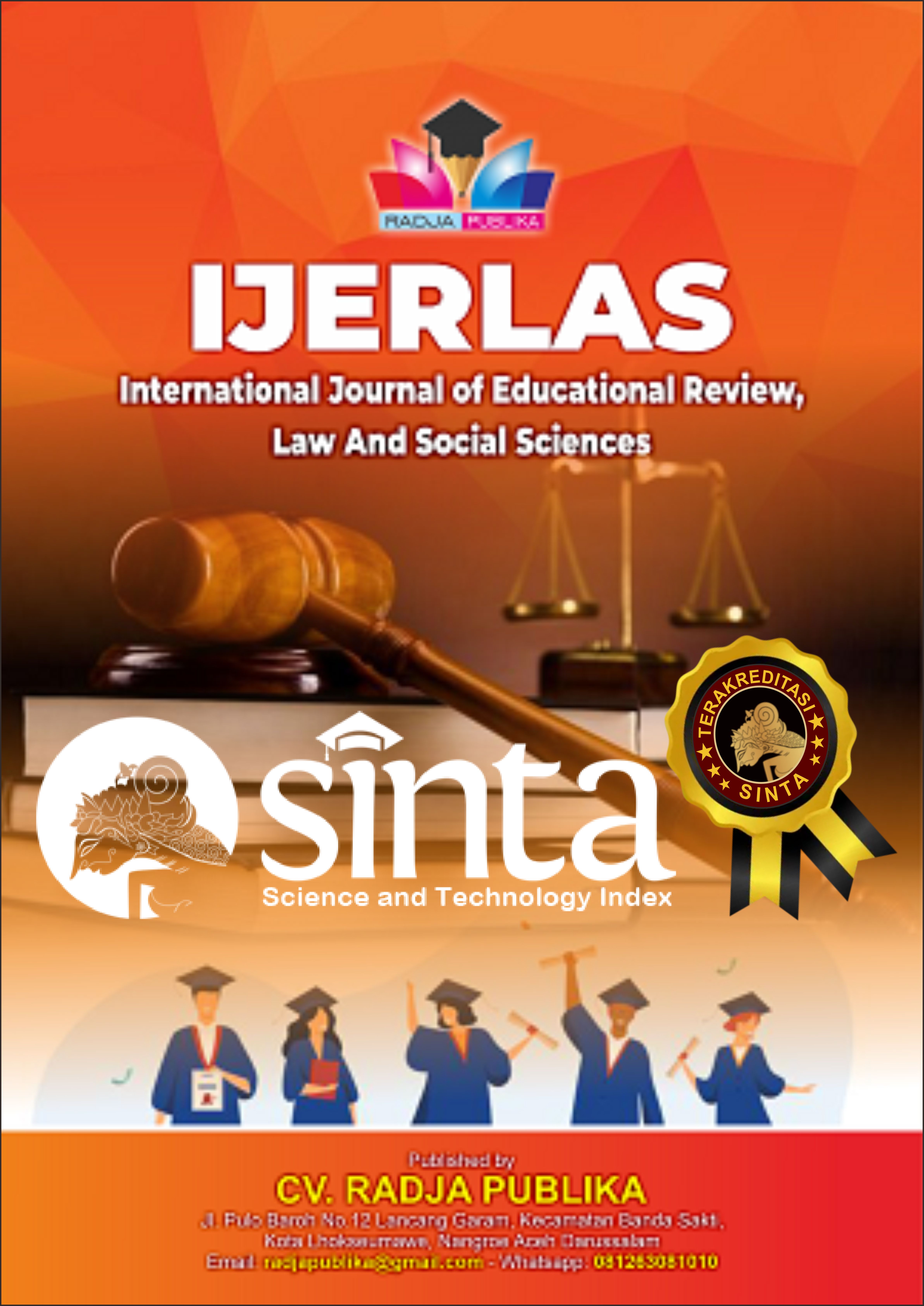OPTIMIZATION OF TEACHER QUALITY CONTROL AT BAGAN BATU DEVELOPMENT COLLEGE FOUNDATION WITH E-MONEVA
Main Article Content
Rizki Candra Dermawan
Evawany Yunita Aritonang
Meilita Tryana Sembiring
Technological advances enable human resource practices towards E-Human Resources. Monitoring and evaluation activities at Yayasan Perguruan Pembangunan Bagan Batu are carried out conventionally so that there are several problems, namely monitoring and evaluation activities are considered less effective and efficient, paper and printing costs and then problems in archiving. The aim is to create an E-Moneva design to optimize quality control activities at Yayasan Perguruan Pembangunan Bagan Batu. The method used is double diamond, the stages are discover, define, develop and delivery. The research results of respondents agreed that E-Moneva can optimize monitoring and evaluation activities by overcoming problems that exist in ongoing activities. E-Moneva can simplify the monitoring and evaluation process and help identify problems and assist in decision making. Monitoring and evaluation activities will run more effectively and efficiently because the features available on E-Moneva are able to support efforts to optimize teacher quality control. The principals agreed that E-Moneva could optimize monitoring and evaluation activities.
Afandi, A., & Bahri, S. (2020). Pengaruh Kepemimpinan Motivasi dan Disiplin Kerja Terhadap Kinerja Karyawan. Maneggio: Jurnal Ilmiah Magister Manajemen, 3(2), 235–246.
Amirudin, A. (2018). Inovasi Peran Pemerintah Desa Dalam Kebijakan Pariwisata Di Kota Batu. JPSI (Journal of Public Sector Innovations), 2(1), 26.
Botutihe, N. (2017). Analisis Efektivitas Pelayanan Publik Pada Rumah Sakit Aloe Saboe Provinsi Gorontalo. 6(2)
De Alwis, A. C., Andrlic, Berislav., Sostar, Marco (2022). The Influence of E-HRM on Modernizing the Role of HRM Context. Scholarly Journal; Economies; Basel; Vol. 10, Iss. 8, 181.
Dede, N. (2020). The Role of E-HRM Practices on Digital Era. In Y. Meral (Ed.), Tools and Techniques for Implementing International E-Trading Tactics for Competitive Advantage (pp. 1-20). Hershey, PA: IGI Global. doi:10.4018/978-1-7998-0035-4.ch001.
Galanaki E., Lazazzara A., Parry E. (2019) A Cross-National Analysis of E-HRM Configurations: Integrating the Information Technology and HRM Perspectives. In: Lazazzara A., Nacamulli R., Rossignoli C., Za S. (eds) Organizing for Digital Innovation. Lecture Notes in Information Systems and Organisation, vol 27. Springer, Cham.
Gosnell, G. K., List, J. A., & Metcalfe, R. D. (2020). The impact of management practices on employee productivity: A field experiment with airline captains. Journal of Political Economy, 128(4), 1195-1233.
Ilkham, Kusrini, Arief. (2019) Evaluasi User Interface pada Aplikasi E-Commerce (Studi Kasus Informa & IKEA). Jurnal Informatika dan Teknologi Informasi. Vol. 4, No.3, Hal. 179-188.
Iqbal, N., Ahmad, M., & Allen, M. M. (2019). Unveiling the relationship between e-HRM, impersonal trust and employee productivity. Management Research Review. 15, 100- 110.
Iqbal, N., Ahmad, M., Raziq, M. M., & Borini, F. M. (2019). Linking e-hrm practices and organizational outcomes: empirical analysis of line manager’s perception. Revista Brasileira de Gestão de Negócios, 21(1), 48-69.
Kamuri, K. (2017). Electronic Human Resource Management : Inovasi Pengelolaan Sumber Daya Manusia Dalam Organisasi (Analisis Penerapan E-Hrm Pada Pt Telkom Wilayah Kupang – Ntt). Journal Of Management (Sme’s) Vol. 4, No.1, p33-52.
Kementerian Pendidikan, Kebudayaan, Riset dan Teknologi. (2016). PERMENDIKBUD No. 20, 21, 22, 23.
Krekel, C., Ward, G., & De Neve, J. E. (2019). Employee wellbeing, productivity, and firm performance. Saïd Business School WP, 4.
Maulidin, M. D. (2017). Efektivitas Pelaksanaan Monitoring dan Evaluasi Berbasis Aplikasi E-Monev Pada Rencana Kerja Organisasi Perangkat Daerah Periode 2017 (Studi Kasus Pada Badan Perencanaan Pembangunan Daerah Kabupaten Bojonegoro). Malang: Fakultas Ilmu Administrasi Universitas Brawijaya.
Noerman, T., Erlando, A., & Riyanto, F. D. (2021). Factors Determining Intention to Continue Using E-HRM. The Journal of Asian Finance, Economics, and Business, 8(2), 1079-1089.
Nurshabrina, N & Adrianti, R. (2020). The Effect of E-Human Resource Management (E-HRM) on Cost Efficiency and Productivity of Employees in the Company. International Research Journal of Advanced Engineering and Science 5(1), 212-215.
Rijali, A. (2019). Analisis Data Kualitatif. Alhadharah: Jurnal Ilmu Dakwah, 17(33), 81.
Schrepp, M. (2019). User Experience Questionnaire Handbook - All you need to know how to apply the UEQ succesfully in your projects.
Seyselis, M. (2021). Efektivitas Electronic Monitoring dan Evaluasi (E-monev) di Badan Perencanaan Pembangunan Kota Surabaya. Publika, Volume 9 Nomor 1 Tahun 2021, 37-48.
Shahreki, J. (2019). Electronic Human Resource Management and Employee Efficiency: Test of the Mediating Role of Impersonal Trust, Journal of Soft Computing and Decision Support Systems, Vol.6 No. 4.
Shaumya & Arulrajah. (2018). The Impact of Electronic Human Resource Management (e-HRM) Practices on Bank’s Environmental Performance, Mentor: The Journal of Business Studies, Vol 2, No 1.
Srihari & Kar. (2020). Effect of E-HRM on Job Satisfaction: a case study of Indian IT and ITES industry, International Journal of Advanced Science and Technology, Vol. 29, No. 7.
Sukmadinata, N. S. (2012). Metode Penelitian Pendidikan. Bandung: PT. Remaja Rosdakarya.
Susanti. (2016). Teori Efektivitas. Repository Unpas, 17–43.




























